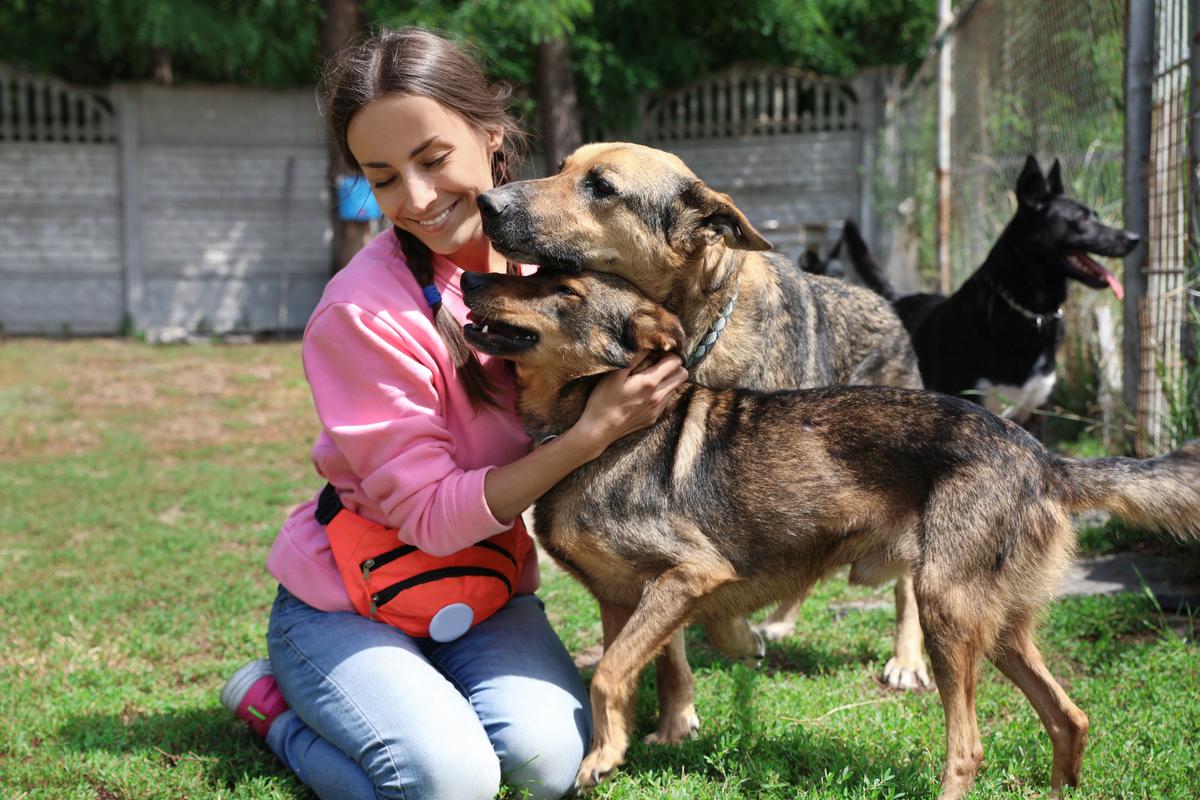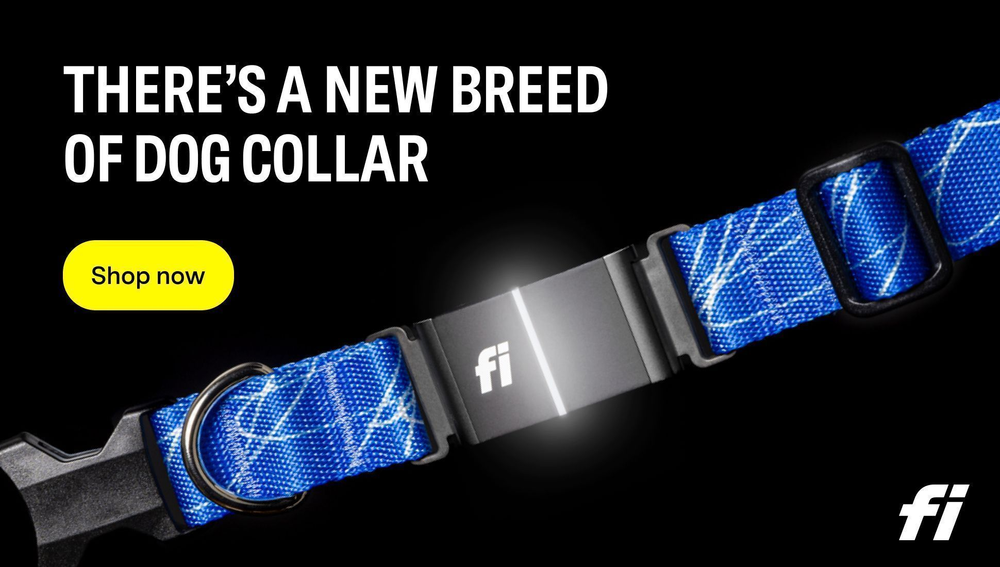
Collars and canine welfare often interconnect in discussions about dog care. After all, for many dog owners, a collar is more than a simple accessory. It's an important tool for identification, control, and sometimes even fashion.
But have you ever considered how this common tool impacts our four-legged friends? It's time we delve deeper into collars and canine welfare: examining the impact on dogs.
A Day in the Life of a Collared Canine
Consider this story about Max, a Golden Retriever living in the heart of Boston. Every morning, his collar is buckled around his fluffy neck, a tag jangling with each excited wag of his tail. The collar becomes an extension of Max, as constant and familiar as his bountiful fur.
But is Max's collar affecting his wellbeing? If so, how?
Dog Collars: A Brief History and Purpose
To understand the role of collars in canine welfare, we need to travel back in time. Ancient Egyptians, believed to be among the first dog domesticators, used collars for identification and restraint. Fast forward a few thousand years, and these purposes still ring true.
However, the materials and design of dog collars have evolved significantly. From the spiked collars of the Middle Ages designed to protect dogs from predators, to the simple leather and nylon collars of the 21st century. Some owners opt for ornate, bedazzled collars, while others prefer functionality, choosing collars equipped with GPS trackers or LED lights for safety.
Are Dog Collars Bad For Dogs?
When we talk about collars and canine welfare, we can't ignore potential health implications. After all, a collar, improperly chosen or used, can lead to physical issues. Take, for instance, tracheal collapse, a condition more common in small breeds, often attributed to long-term pressure on the neck from a tight collar.
Let's return to our friend Max. If his collar is too tight or heavy, it may impede his breathing or cause discomfort during his daily activities. Even the jangling of tags, while seemingly innocuous, can cause noise-induced anxiety in some dogs.

Choosing the Right Collar: A Step Toward Enhanced Canine Welfare
When it comes to collars and canine welfare, choosing the right collar is paramount. A well-fitted collar should be snug, but not tight. You should be able to comfortably slide two fingers between the collar and your dog's neck.
Materials matter too. A collar made from a soft, durable material like leather or nylon can prevent skin irritation and hair loss. Remember, your dog wears this collar every day – it should be comfortable and non-abrasive.
Training Collars: A Controversial Topic
In our journey to understand the impact of collars on dogs, we must address the contentious topic of training collars. These include choke chains, prong collars, and electronic collars, all of which are used for training or behavior correction.
The welfare concerns with these collars are significant. Improper use can lead to physical injuries, like neck sprains or skin damage, and psychological issues, such as fear or aggression.
The Future of Collars and Canine Welfare
The relationship between collars and canine welfare is complex. While we've made considerable progress in improving collar design and understanding its implications on dog health, there is still much to learn.
Innovations continue to emerge, with the rise of smart collars equipped with health monitoring features. These advancements promise to further intertwine collars with canine welfare, redefining their role from mere identification tools to active contributors to dog health management.
It's More Than Just Collars: Harnesses as an Alternative
As we further examine collars and canine welfare, we must explore alternatives. Enter the dog harness. For dog owners who worry about the potential health issues associated with collars, harnesses often present a viable option.
Consider the case of Bella, a dainty Pomeranian who loves to explore her neighborhood. In the past, Bella's walks were a stressful experience due to her collar-induced coughing. Once her owners switched to a harness, Bella's walks transformed. No longer did a collar press against her delicate trachea; instead, a harness distributed the leash tension evenly across her chest and back.
Harnesses aren't only for small dogs. Large, strong breeds can also benefit, as harnesses offer better control. And for dogs that pull? There are special no-pull harnesses that gently discourage this behavior without causing discomfort or harm.

The Importance of Training: More Than the Collar You Choose
Even as we ponder the impact of collars on canine welfare, it's important to remember that a well-behaved dog isn't solely the product of the collar (or harness) you choose. Proper training plays a crucial role.
Consider positive reinforcement techniques that reward good behavior. Or think about clicker training, a method that uses a distinctive sound to mark desirable behavior. Training methods like these can enhance the bond between you and your dog, leading to a happy, respectful relationship.
Animal Welfare Beyond Collars: A Holistic Approach
In our quest to understand the interplay of collars and canine welfare, we must acknowledge that dog welfare extends beyond what type of collar or harness a dog wears.
Diet, exercise, mental stimulation, and veterinary care all contribute significantly to a dog's wellbeing. Neglecting any of these aspects can lead to a less than ideal quality of life for our canine companions.
Collars, therefore, are just one piece of the larger puzzle of canine welfare. As responsible pet owners, we need to consider all aspects of our pets' lives to ensure their happiness and wellbeing.
In conclusion, the relationship between collars and canine welfare is more complex than it first appears. Through understanding, responsible choices, and a holistic approach to pet care, we can ensure that our four-legged friends lead happy, healthy lives.
Misconceptions and Myths: Collars and Canine Welfare
As we delve further into the topic of collars and canine welfare, it's necessary to debunk some misconceptions and myths surrounding the use of dog collars.
One common myth is that a dog cannot choke with a collar on. This is not true. Improperly fitted collars can indeed cause choking or other injuries.
Another misconception is that all training collars are harmful and cruel. However, the truth is more nuanced. Yes, some training collars can cause harm if used incorrectly. But when used properly and under the guidance of a professional trainer, some can serve as effective training tools.
Involvement of Animal Rights Groups
Animal rights organizations worldwide are playing an increasingly important role in discussions surrounding collars and canine welfare.
These groups are advocating for the development and use of safer, more humane collar alternatives. They're also pushing for increased regulation and control over the use of aversive training collars.
Organizations like the RSPCA have been vocal about the dangers of using certain types of training collars, highlighting the need for better education and awareness among dog owners.
Laws and Regulations
In several countries and states, laws and regulations have been implemented in response to the controversy surrounding certain types of dog collars.
Some places, like Wales and Quebec, have banned electric shock collars outright. Elsewhere, regulations exist that control the sale and use of these devices.
Even if you live in a region where training collars are legal, it's important to consider if their use is worth the potential risk to your dog's wellbeing.
Responsible Dog Ownership
Ultimately, the conversation about collars and canine welfare underscores the importance of responsible dog ownership.
Choosing the right collar or harness, understanding the potential health implications, providing adequate training, and staying informed about the latest research and regulations are all part of being a responsible pet owner.
By prioritizing our dogs' welfare in every decision we make, we can help ensure they live a life full of happiness and good health.
Collars and canine welfare: examining the impact on dogs is an important topic that all dog owners should be aware of. Let's continue to prioritize our furry friends' wellbeing as we navigate the many aspects of dog ownership.
Fi Collars: The Future of Dog Collars?
As we continue to discuss collars and canine welfare, it's impossible to ignore the impact of technology. A prime example of this technological revolution in the world of dog collars is the Fi dog collar.
The Fi collar is a smart collar, designed with both dog safety and owner convenience in mind. Its positive impact on dogs and their welfare is multifaceted.
Location Tracking for Safety
Perhaps the most critical feature of the Fi collar is its GPS tracking capability. With the Fi collar, you no longer have to worry about your dog getting lost. The collar provides real-time location tracking, giving pet owners peace of mind knowing they can locate their furry friend at any time.
This feature is especially beneficial for dogs who are escape artists or for those living in rural areas where a dog might roam free. In the unfortunate event of your dog going missing, having a Fi collar significantly increases the chances of a safe return.

Health Monitoring
The Fi collar doesn't stop at location tracking. It also serves as a fitness tracker for your dog, monitoring their activity levels throughout the day.
This function can be a great tool for ensuring your dog is getting the right amount of exercise for their breed, age, and health condition. Over time, the Fi collar can help you detect changes in your dog's activity levels that might indicate a health issue, allowing you to address potential problems before they become serious.
Durability and Comfort
Despite its high-tech features, the Fi collar doesn't compromise on the basics. It's designed to be as comfortable as a regular collar, and its materials are durable and resistant to all types of weather. This means your dog can wear it comfortably on a daily basis, whether they're out on a walk or just lounging at home.
Training Assistance
While the Fi collar isn't specifically a training collar, it can indirectly assist with training. By monitoring your dog's activity levels, you can see if they are restless or not getting enough exercise. Restless dogs are often harder to train, so ensuring they have enough physical activity can make your training sessions more effective.
In conclusion, the Fi collar represents a significant advancement in the realm of collars and canine welfare. It incorporates technology to improve dogs' safety, monitor their health, and assist with their training, making it an excellent tool for any dog owner dedicated to the wellbeing of their furry friend.
Conclusion: Collars and Canine Welfare Reconsidered
The world of dog ownership is filled with numerous decisions, each one impacting the welfare of our beloved four-legged friends. One of the first and most visible of these choices is the selection of a collar. As we've explored in this article, this seemingly simple decision carries considerable weight.
From the early domestication of dogs to the present day, collars have served a variety of purposes. Whether used for identification, control, fashion, or even tracking and health monitoring in the case of smart collars like the Fi, their role is undeniable. However, with these varied uses comes an equally varied impact on our dogs' health and wellbeing.
Understanding the potential implications of collar use, such as physical harm or discomfort, is essential for any responsible dog owner. Awareness of collar-related injuries and knowing the signs of a poorly fitted collar can make a world of difference in a dog's life. Alternatives like harnesses may also offer a safer and more comfortable option for some dogs.
We also dove into the controversial subject of training collars, touching on their potential harm and the importance of training beyond the use of corrective devices. This brought to light the critical role of appropriate and humane training methods in ensuring canine welfare.
Our journey also acknowledged the broader picture of canine welfare, stretching beyond the simple choice of collar or harness. A holistic approach, considering every aspect of a dog's life from diet to mental stimulation, is necessary to fully ensure their wellbeing.
Finally, the advent of smart collars like the Fi offers promising advancements in canine welfare. By merging technology with pet care, these devices provide enhanced safety through location tracking and health monitoring.
As we conclude, it's clear that the topic of collars and canine welfare is a complex but crucial aspect of dog ownership. The collars our dogs wear can significantly impact their wellbeing. Yet, with thoughtful selection, awareness, and a holistic approach to care, we can ensure that this impact is a positive one.
In this intricate dance between collars and canine welfare, our role as pet owners is to lead with love, responsibility, and a commitment to our dogs' health and happiness. After all, their wellbeing depends on our choices.





